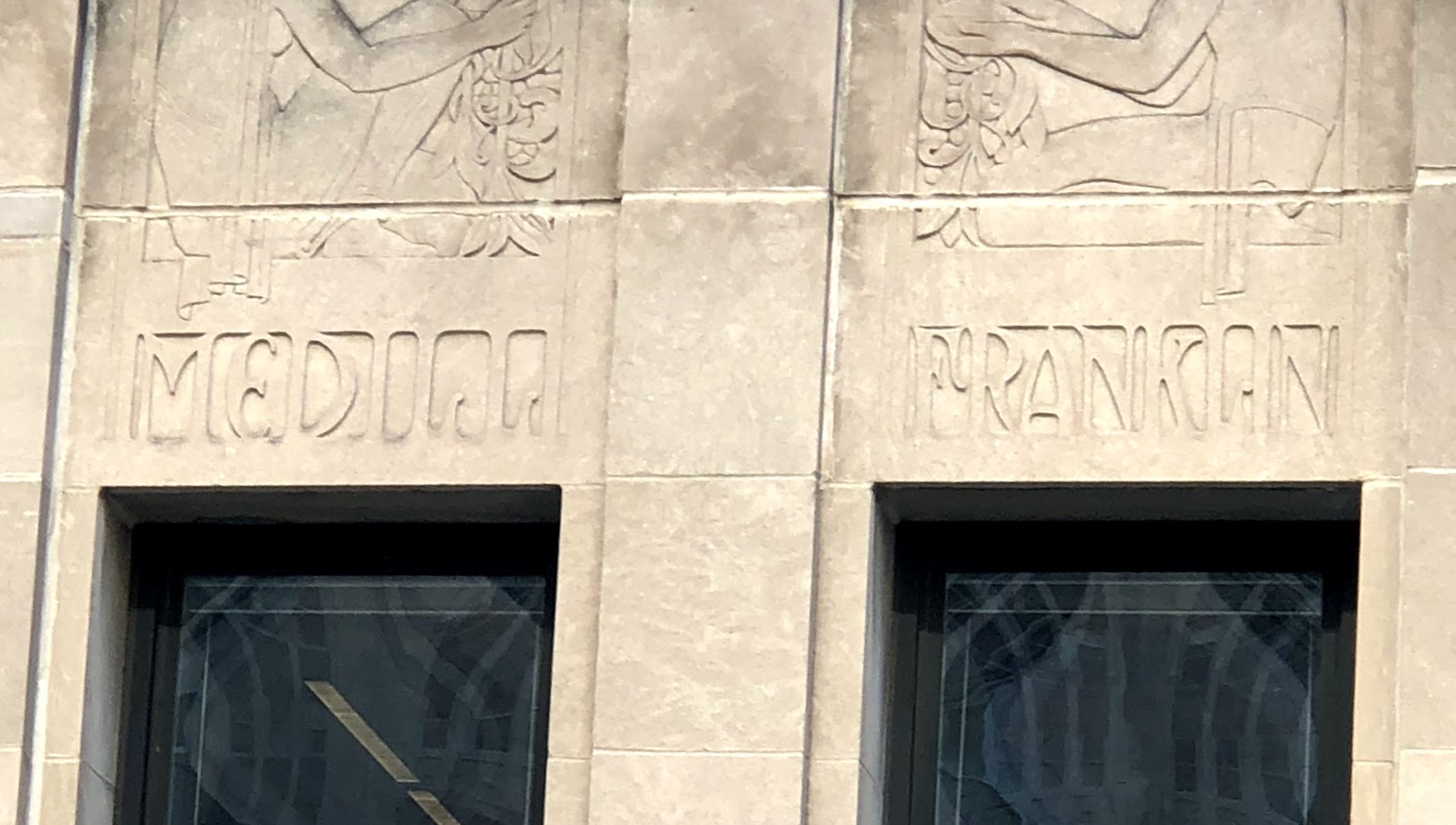Chicago Daily News Building on:
[Wikipedia]
[Google]
[Amazon]
The Riverside Plaza is considered one of Chicago's finest Art Deco buildings. It was originally known as the Chicago Daily News Building. At the time of its completion in 1929, the '' Daily News'' was one of the dominant newspapers in Chicago. The 26-story building helped revitalize the Chicago River and made innovations in engineering and urban design.
In the 1920s, the buildings along the river were industrial in nature and butted up against a waterway that was polluted and considered undesirable. This building was the first to develop the Chicago riverfront aesthetically as well as commercially. It was the first American skyscraper with an open-air plaza as part of its design.
In 1925, 
Walter A. Strong
Walter Ansel Strong (1883–1931) was the publisher of the ''Chicago Daily News'' during Prohibition and the early days of the Great Depression. He was an innovator in business and a prominent civic leader.
Early years
Walter Strong was born in ...
acquired the ''Chicago Daily News'' from the estate of Victor F. Lawson
Victor Fremont Lawson (September 9, 1850 – August 19, 1925) was an American newspaper publisher who headed the ''Chicago Daily News'' from 1876 to 1925.David Paul Nord. "Lawson, Victor Fremont". ''American National Biography Online''. Oxford Univ ...
. Once he became publisher, Strong took immediate steps to build a modern newspaper facility. Lawson had owned a parcel along the river, which is now the site of the Chicago Opera House
The Chicago Opera House was a theater complex in Chicago, Illinois, designed by the architectural firm of Cobb and Frost. The Chicago Opera House building took the cue provided by the Metropolitan Opera of New York as a mixed-used building: it h ...
. Strong thought it too small and instead acquired the air rights over railroad tracks that ran along west side of the river opposite the original site. A year and one-half of meetings were required to reach an agreement between all parties. Once that was settled, Strong sold Lawson’s parcel to the utility magnate Samuel Insull
Samuel Insull (November 11, 1859 – July 16, 1938) was a British-born American business magnate. He was an innovator and investor based in Chicago who greatly contributed to create an integrated electrical infrastructure in the United States ...
, with the understanding that he construct a building that would include a new home for the Opera.
Strong commissioned Holabird & Root to design a modern structure that would house 2,000 ''Daily News'' employees and provide studio space for his radio station, WMAQ. The building’s bold design and Art Deco façade were widely regarded as shot fired at the '' Chicago Tribune'', which operated out of the Tribune Tower, a large Neo Gothic building on North Michigan Avenue completed in 1925. Inside, the building featured a much-admired mural by John W. Norton. It was dominated by diagonal lines, and divided into three sections: Gathering the News, Printing the News, & Transporting the News. In the fall of 1993, it was removed and put into storage, where it has remained. Outside, it had bas-reliefs depicting Benjamin Franklin, Charles Anderson Dana, Horace Greeley
Horace Greeley (February 3, 1811 – November 29, 1872) was an American newspaper editor and publisher who was the founder and newspaper editor, editor of the ''New-York Tribune''. Long active in politics, he served briefly as a congressm ...
, Joseph Pulitzer, Samuel Bowles III, James Gordon Bennett and Joseph Medill and a fountain honoring Victor Lawson. The Chicago Daily News Building was completed in June 1929 at a cost of $8 million. During the dedication ceremony, President Herbert Hoover pressed a button that started the presses. The ''Daily News'' ceased publication in 1978. Although the building has since been renamed Riverside Plaza, according to the ''Tribune''’s architecture critic, the Daily News Building remains, “one of Chicago's finest examples of Art Deco architecture and a path-breaking work of engineering and urban design.”
A ramped concourse through the south side of this building now serves as the main entryway to the Ogilvie Transportation Center in Citigroup Center. This concourse was originally the main lobby, with an even floor in place of the ramp up to the bridge at Canal Street.

References
External links
{{Chicago Skyscrapers Art Deco architecture in Illinois Art Deco skyscrapers Buildings and structures completed in 1929 Skyscraper office buildings in Chicago West Side, Chicago 1929 establishments in Illinois Chicago school architecture in Illinois